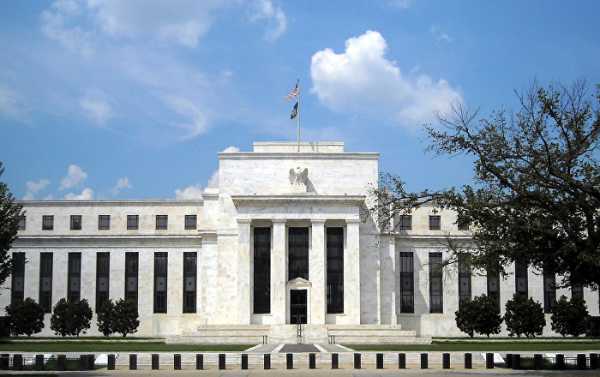
Cleveland Fed President Loretta Mester says the Federal Reserve will continue its policies of interest rate hikes and bond portfolio reductions ‘this year and next’, seeking to normalise US monetary conditions amid a favorable growth outlook.
Kristian Rouz — President of the Federal Reserve Bank of Cleveland Loretta Mester says the US central banking system will continue to raise interest rates throughout this year and next. She said this policy tightening is aimed at preventing the economy from overheating amid sky-high property and stock market values.
The Cleveland Fed President also pointed out that the Trump administration’s trade policies might stir some ‘uncertainty’ regarding the central bank’s outlook on US economic growth. However, she said current macroeconomic dynamics are suggesting growth momentum will continue due to the acceleration in private sector activity, spurred by tax cuts and ongoing deregulation efforts.
“This uncertainty may not be resolved quickly,” Mester said. “Assessing the impact on the US macroeconomy will ultimately depend on how other countries react, including whether they impose their own tariffs or other trade barriers in response.”
Mester made her remarks during a speech at Princeton University in New Jersey on Monday.
First Session Wednesday
Cleveland’s Fed President also stressed that the White House’s fiscal policies — spearheaded by President Donald Trump’s economic team and Treasury Secretary Steven Mnuchin — will boost the US GDP by at least 0.5 percent per year in the current environment.
However, she added, this momentum might accelerate, weather permitting.
Mester’s comments come after the Federal Open Market Committee (FOMC) hiked base borrowing costs by a quarter-percent last week, to a gauge of 1.5-1.75 percent. Additionally, the central bank pledged to reduce its bond portfolio and normalize its $4.5-trillion balance sheet.
Mester said she expects US GDP growth to exceed 2.5 percent this year. Meanwhile, the Fed in on course to undertake three more interest rate hikes this year. Mester said the hikes will continue ‘this year and next year’.
“I am monitoring trade developments, and while I see them as a risk to the forecast, at this point they have not led me to change my outlook for the overall economy,” Mester said. “We want to give inflation time to move back to goal; this argues against a steep path.”
Additionally, Mester observed that the US labor market is showing signs of weakness after last week’s data. Although the unemployment rate stood at 4.1 percent in February, there is a significant amount of underutilized labor capacity, connected to the still-low labor participation rate.
Low labor productivity is also marring the US economic outlook.
Mester’s GDP expansion projection for this year, at 2.5 percent, is modest when compared with the expectations of the Treasury Department and the White House. Administration and cabinet policymakers say US economic expansion could surpass 3 percent this year.
They might turn out to be correct, as at this point there is little clarity how exactly President Trump’s tax cuts and deregulation have reflected on the broader growth picture. The first reliable data reflecting these dynamics are not expected until late April.
“If the economy evolves as I anticipate, I believe further gradual increases in interest rates will be appropriate this year and next year,” Mester reiterated. The Fed’s objective is to “avoid a build-up in risks to macroeconomic stability that could arise if the economy were allowed to overheat,” she stated.
Dynamics in foreign trade also affect US economic growth, and some experts suggest a possible rise in imports could slash percentage points off GDP readings — despite the actual gains in consumer purchasing power, household incomes, and business activity.
In this light, the Trump administration’s efforts to secure bilateral trade deals are crucial to forward-looking GDP projections. Current estimates are to a greater extent based off the trends observed last year.
However, as the US economy is entering the most important phase of its transformative period, data distortions might become more commonplace.
Sourse: sputniknews.com






